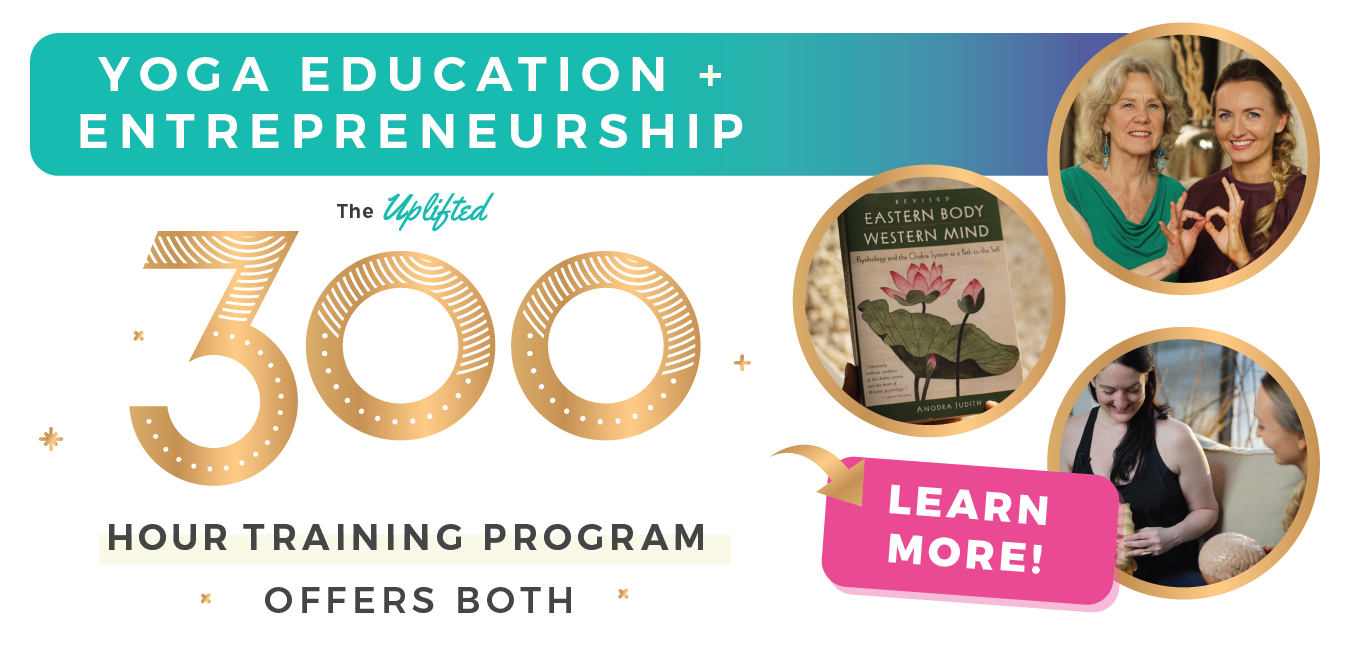(Baddha Konasana): Techniques, Benefits, Variations
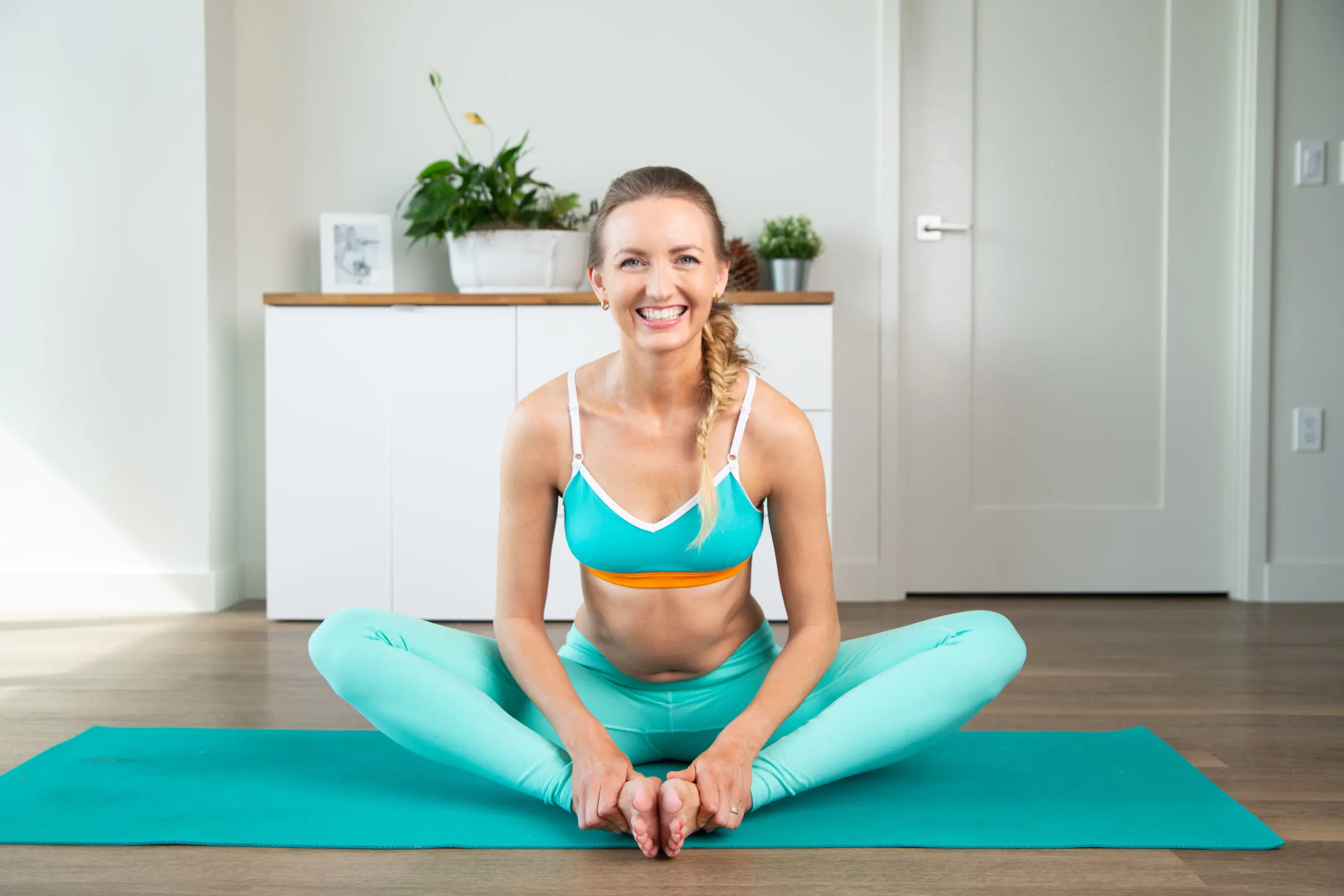
Easy Pose Prep & Practice
1
Start seated on the floor, and bring the soles of the feet together. Root the hips down.
2
Place the thumbs on the inside of the soles, just as if you were opening up a book. On an inhalation, sit up to lengthen the spine first. On an exhalation, slowly bring the torso forward.
3
Take the elbows out wide, without forcing the knees down. Or, option to take both hands out in front of you palm face up resting forearms on the floor.
4
With every inhale, find more length in the spine and keep your shoulders down the back. With every exhale, fold down a little deeper and root your hips back into the ground. Let yourself rest here.
5
Breathe in to slowly rise the torso back up to seated and lift the knees up to come out of this position.
Easy Pose Prep & Practice
1
Start seated on the floor, and bring the soles of the feet together. Root the hips down.
2
Place the thumbs on the inside of the soles, just as if you were opening up a book. On an inhalation, sit up to lengthen the spine first. On an exhalation, slowly bring the torso forward.
3
Take the elbows out wide, without forcing the knees down. Or, option to take both hands out in front of you palm face up resting forearms on the floor.
4
With every inhale, find more length in the spine and keep your shoulders down the back. With every exhale, fold down a little deeper and root your hips back into the ground. Let yourself rest here.
5
Breathe in to slowly rise the torso back up to seated and lift the knees up to come out of this position.
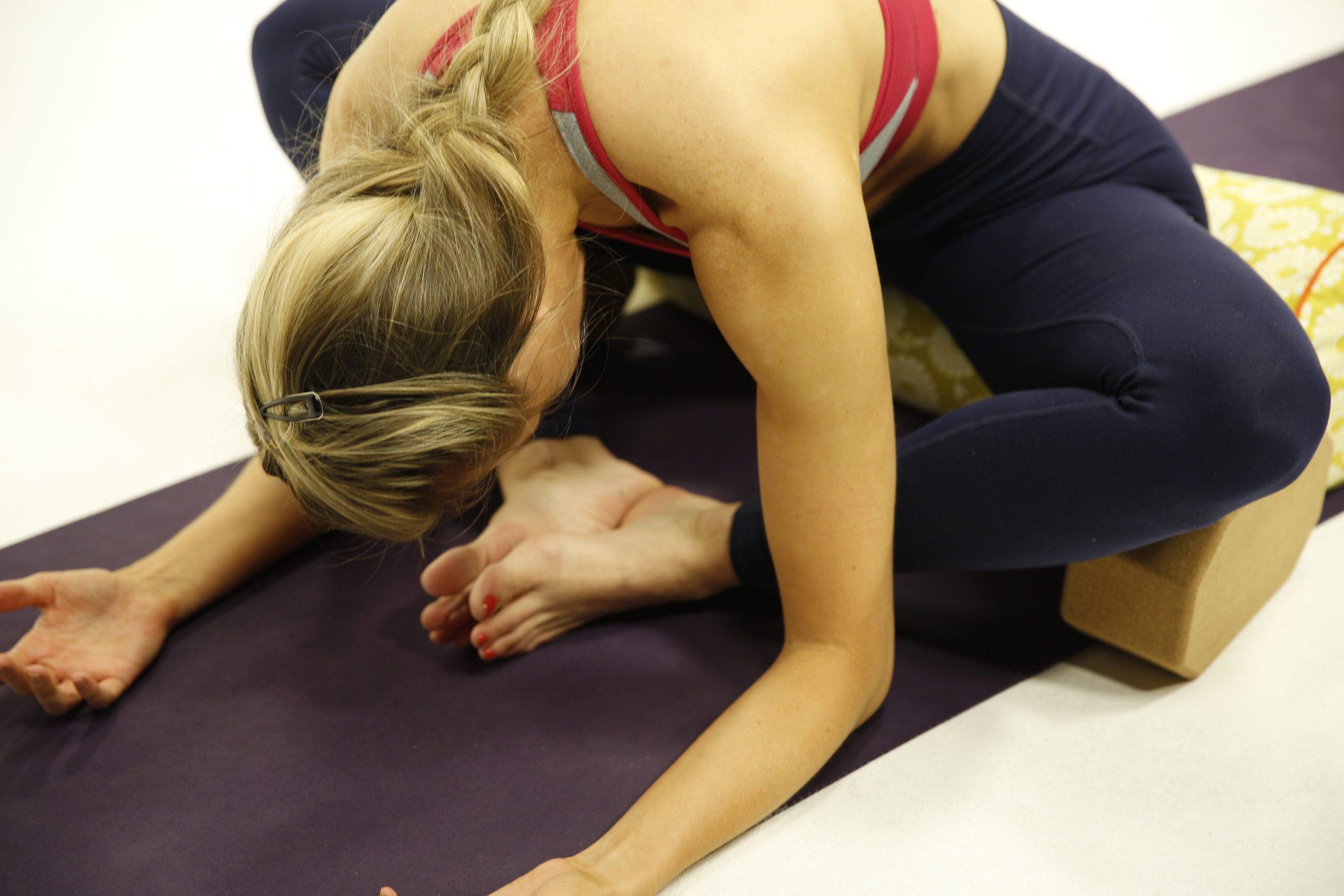
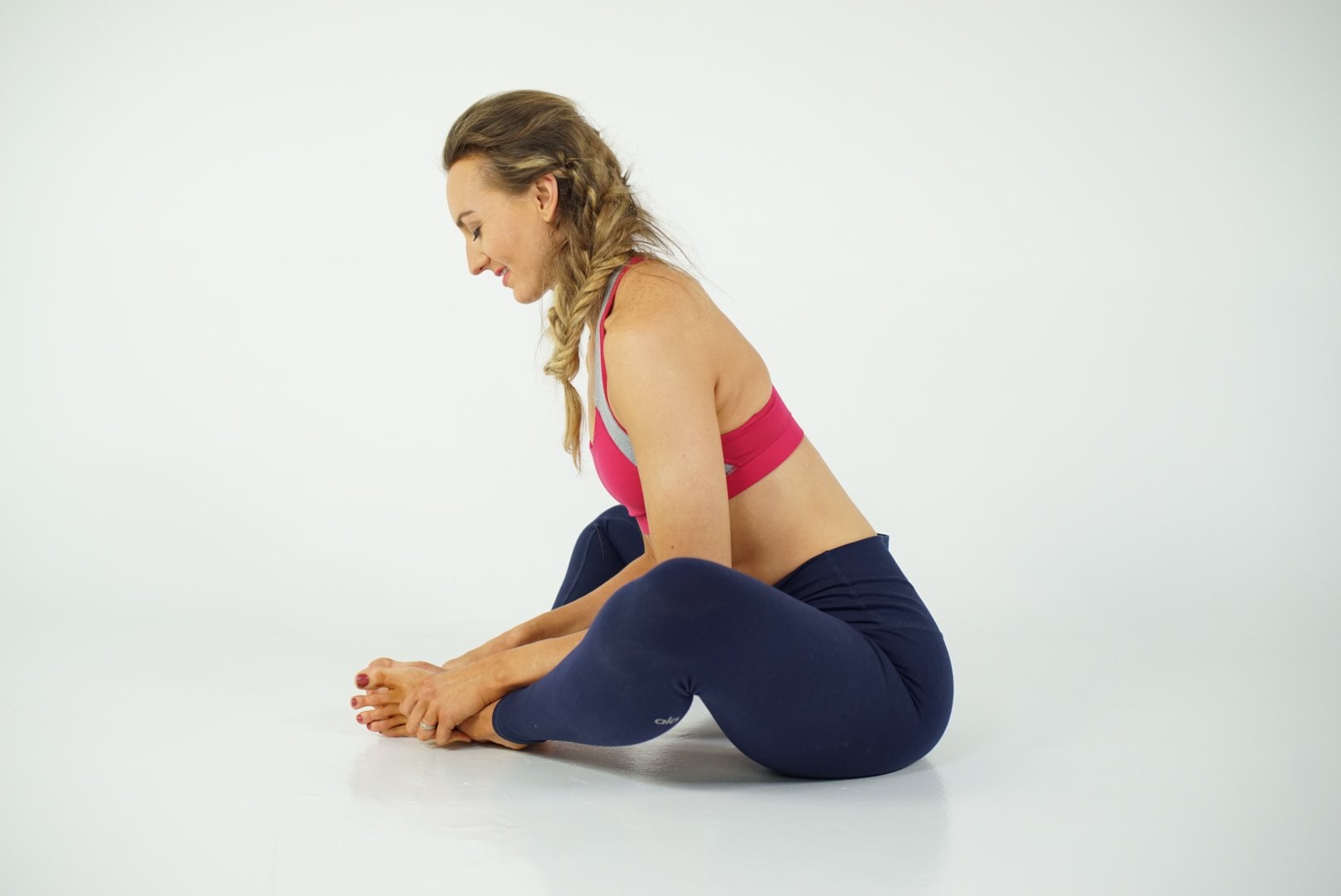
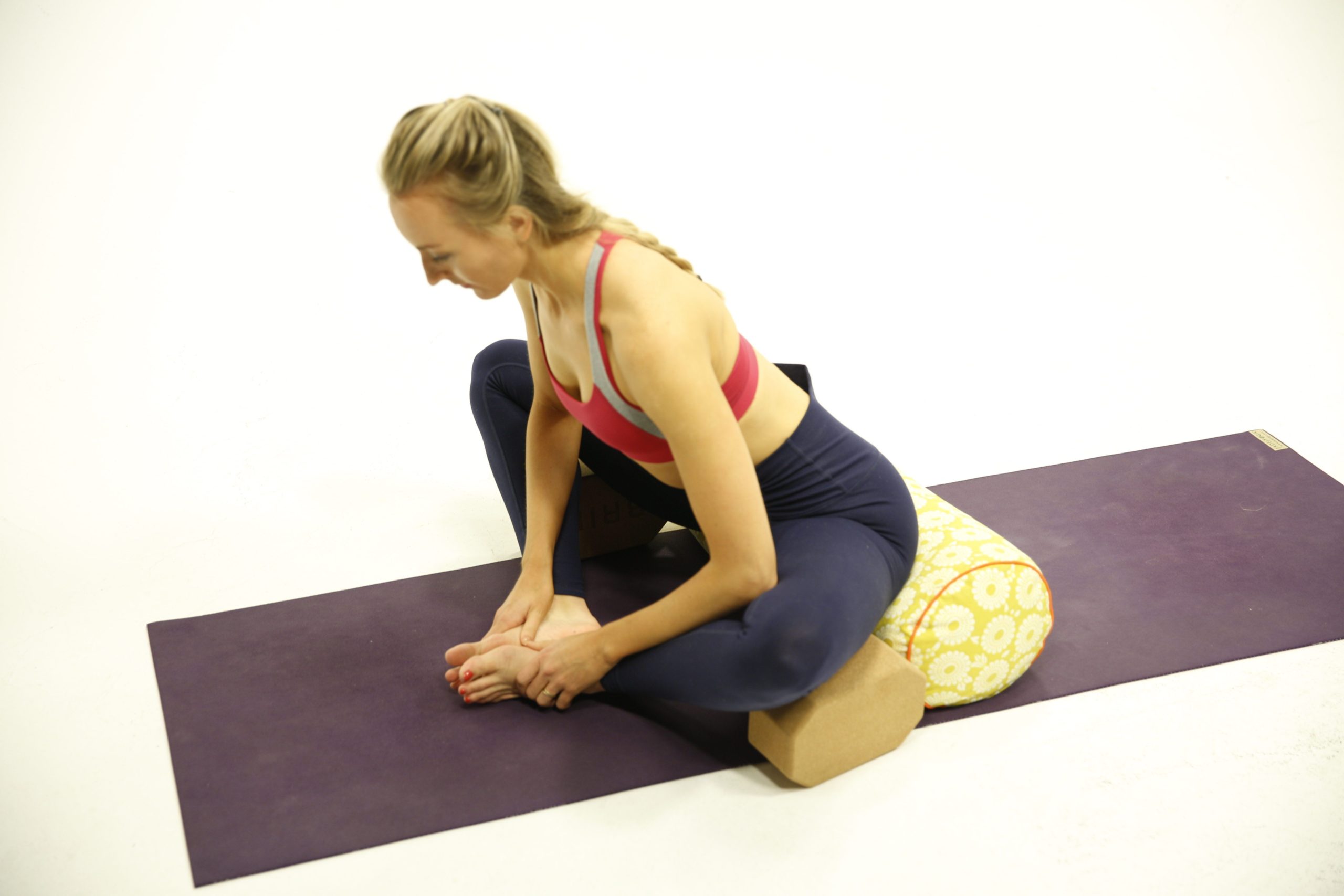
Variations/Modifications
- Sit up on the edge of a blanket or bolster
- Rest the forehead on a block at its highest height
- Place blocks underneath the knees
- Stay upright without folding down
Physical, Mental, and Emotional Benefits
- Opens the hips
- Stretches the inner thighs
- Releases the lower back
- Great meditation posture
- Helps to bring focus inward
Contraindications
- Knee injury
- Hamstring, groin, or lower back injury
- Sciatica
- Do not push your knees down with the arms or hands
Thoughtful Sequencing
Rotated Head to Knee (Parivritta Janu Sirsasana) Right and Left, Wide-Leg Seated Pose (Upavistha Konasana), Bound Angle/Butterfly (Baddha Konasana), Seated Staff Pose (Dandasana), Seated Spinal Twist/Half Lord of the Fishes (Ardha Matsyendrasana), Seated Forward Bend (Paschimottanasana)
Try Bound Angle Pose On The Blog
A Few Notes
Bound angle pose (Baddha Konasana) is an incredibly grounding yoga posture. There are several variations of Baddha Konasana and depending on which variation you choose, you will have a dramatically different experience in the pose. No matter the variation, however, the pose stretches the inner thighs, hips, groins, and lower back. In traditional Tantra yoga, bound angle pose connects us with the Earth’s energy. As such, bound angle pose is associated with the Root Chakra. When following traditional Tantric practices, it is important to keep the spine straight while sitting, as if it were an energetic channel that connects your body to both the Earth and the Cosmos simultaneously.
If you cannot comfortably press the soles of your geet together, with the outer edges of your feet firmly pressed into the ground, then feel free to move your feet further away from your body until the soles of your feet can comfortably touch. If you have tight hips or knee pain, you can place pillows or blocks underneath your knees so that the weight of your legs doesn’t pull them down too much. Another option is to place a pillow under your sits bones as well as under your knees. Elevating the hips like this takes the pressure off of the lower back and relaxes the hip joints so that you can hold the pose for longer.
If you can comfortably pull your heels in toward your pelvis, then try leaning your body forward so that your chin moves toward the ground. Some yoga styles recommend keeping your spine straight as you fold forward while others allow for a curved spine. Either option works, depending on which style of yoga you practice and what your goals are for the pose. If you’re able to, you can press your knees and thighs into the floor as you lean forward. For a deeper stretch, move your feet forward and away from your hips and press the outer edge of your feet firmly together. Hold this variation for a few minutes to open your hips and lower back.
Reclined bound angle pose is especially popular in restorative yoga styles, like Yin yoga, as it opens the pelvis and hip region. If you’d like to try reclined bound angle pose (Supta Baddha Konasana), then gently lean your body back towards the floor. You can place pillows beneath your head and spine to make it more comfortable. In this variation, you can play with the distance between your feet and your pelvis, moving your heels close and then far away from your sits bones to see what feels good.
To come out of butterfly pose, slowly lift your knees towards one another, placing the soles of your feet on the floor. Take a quiet moment to sit and feel the benefits of the posture. I like getting into child’s pose after this posture to counter the effects. In child’s pose, I keep my feet together underneath my pelvis and open my knees wide. Bring your head to the ground and hold this position for one to two minutes. When you’re ready press yourself up and bring your knees together. Sit with a straight spine and take a moment to reflect on your practice.
Want more yoga pose tutorials? See more in my Yoga Pose Directory.
Learn how to do 11 of the most popular yoga poses correctly. Free video + PDF download.


